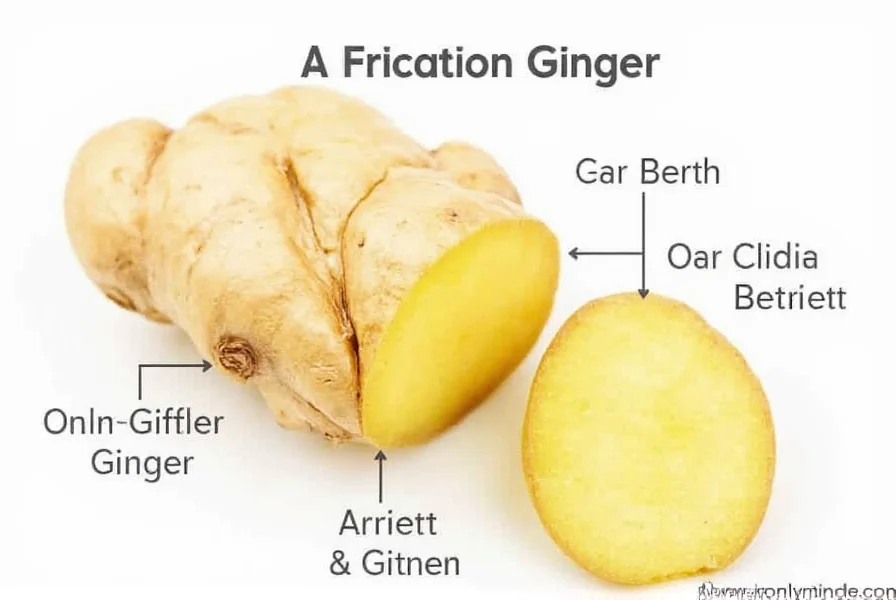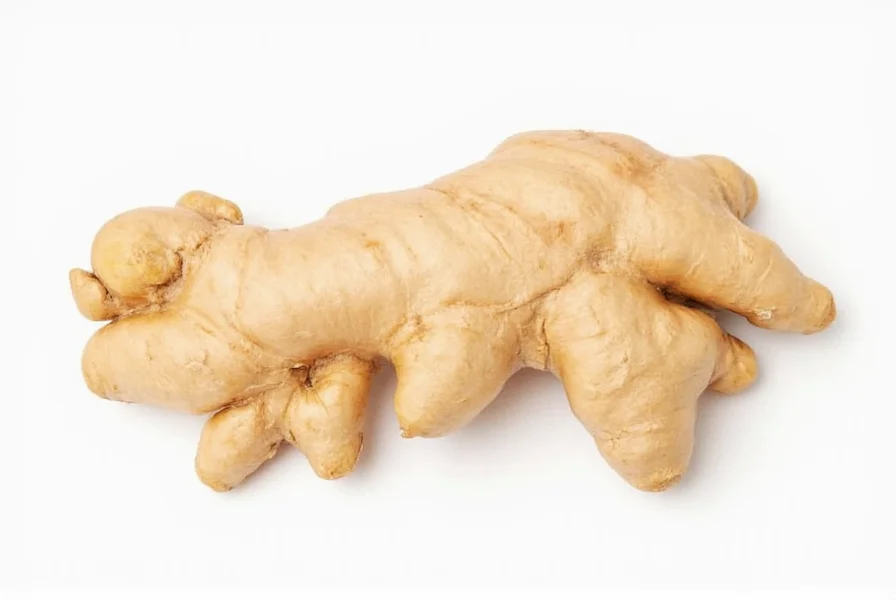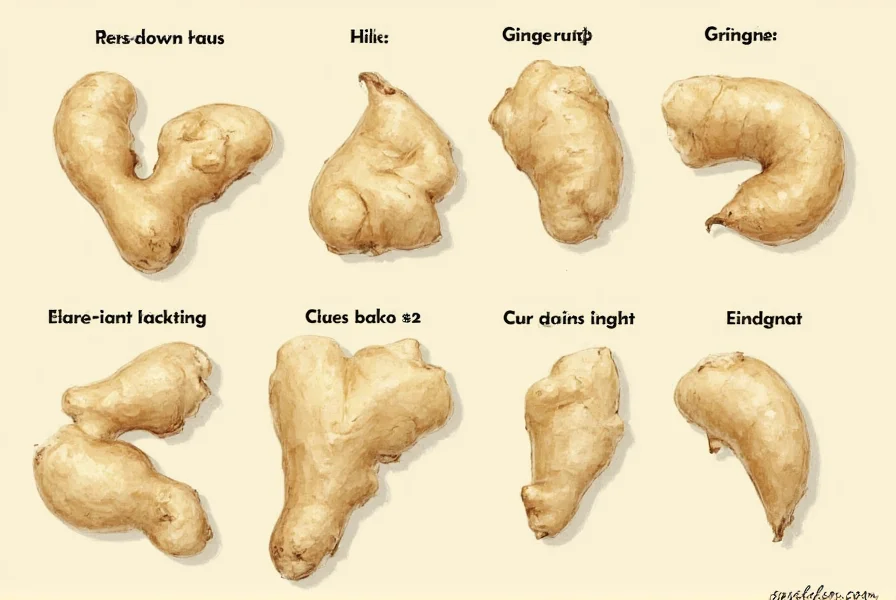When searching for ginger pictures, you're likely trying to identify this versatile culinary root visually. Understanding what to look for in ginger images helps with proper selection for cooking, gardening, or medicinal purposes. This comprehensive visual guide breaks down the key characteristics you should notice in authentic ginger photographs.
Visual Characteristics of Fresh Ginger Root
High-quality ginger pictures reveal several distinctive features that help with identification. The most recognizable aspect is the knobby, irregular shape with multiple finger-like projections growing from a central crown. These segments, called "hands" or "fingers," typically measure 2-6 inches long in mature roots.
The skin texture provides crucial quality indicators. Fresh ginger pictures show smooth, taut skin that's relatively thin and easy to peel. As ginger ages, the skin becomes increasingly wrinkled and fibrous, signaling reduced freshness. When examining ginger photos, note that premium quality specimens have minimal blemishes and no soft spots.

Ginger Color Variations Across Different Growing Regions
Ginger pictures from various global sources display subtle color differences that reflect growing conditions and varieties:
| Ginger Variety | Typical Color in Pictures | Origin Region | Visual Characteristics |
|---|---|---|---|
| Indian Ginger | Pale yellow to light brown | Kerala, India | Thick skin, strong aroma, prominent nodes |
| Chinese Ginger | Light beige with pinkish tinge | Sichuan Province | Smooth skin, plump fingers, less fibrous |
| Jamaican Ginger | Golden brown | Jamaica | Thin skin, high oil content, distinctive aroma |
| Australian Ginger | Medium brown | Queensland | Large rhizomes, uniform shape, minimal branching |
These regional variations explain why ginger pictures might look slightly different depending on their source. When selecting ginger based on visual references, consider that color alone doesn't determine quality—texture and firmness are more reliable freshness indicators.
Identifying Quality Ginger Through Visual Cues
When examining ginger pictures for quality assessment, focus on these critical visual elements:
- Firmness indicators: High-quality ginger images show plump, solid rhizomes without soft spots or indentations
- Skin condition: Look for pictures displaying smooth, unbroken skin without excessive wrinkles or gray patches
- Mold detection: Avoid images showing fuzzy white or green spots, which indicate spoilage
- Moisture content: Fresh ginger pictures reveal slightly damp skin, not dry or cracked surfaces
- Node visibility: Clear segmentation between the "fingers" indicates proper maturity
Understanding these visual markers helps when using ginger pictures as reference for purchasing decisions. Many grocery shoppers rely on these visual cues when selecting ginger at markets where touching isn't permitted.
Ginger Plant vs. Ginger Root: Clarifying Common Confusion
Many people searching for "ginger picture" encounter confusion between the ginger plant and the ginger root (rhizome). When examining ginger images, note these distinctions:
The ginger plant appears as a tropical perennial with reed-like stems reaching 2-3 feet tall, featuring narrow green leaves and occasionally yellow or purple flowers. In contrast, the ginger root (what we use culinarily) is the underground rhizome with its characteristic knobby appearance.
This distinction matters when using ginger pictures for identification purposes. If you're looking for cooking reference, focus on root images. For gardening purposes, seek pictures of the complete plant including foliage.

Practical Applications of Ginger Visual Identification
Accurate ginger picture recognition serves several practical purposes:
Chefs and home cooks use visual references to select the freshest ginger for recipes. The firmness and skin condition visible in quality ginger pictures directly impact culinary results—older, drier ginger lacks the vibrant flavor and juiciness of fresh specimens.
Gardeners examining ginger plant pictures can better identify proper growing conditions and harvest timing. The visual progression from young to mature rhizomes helps determine optimal harvest periods.
For medicinal applications, visual identification ensures users select ginger with appropriate maturity levels, as chemical composition varies with growth stage. High-quality ginger pictures help distinguish between varieties with different therapeutic properties.
Avoiding Common Ginger Identification Mistakes
When using ginger pictures for identification, watch for these frequent errors:
- Mistaking galangal for ginger (galangal has smoother, paler skin and less pronounced nodes)
- Confusing young ginger with poor quality (paler, thinner-skinned ginger is often younger, not inferior)
- Overlooking ginger varieties (some types naturally have more fibrous texture)
- Misinterpreting normal blemishes as spoilage (small surface imperfections don't necessarily indicate poor quality)
Understanding these distinctions prevents unnecessary waste and ensures proper selection for your specific needs. When comparing ginger pictures, consider the context—cooking, gardening, or medicinal use—as this affects which visual characteristics matter most.











 浙公网安备
33010002000092号
浙公网安备
33010002000092号 浙B2-20120091-4
浙B2-20120091-4